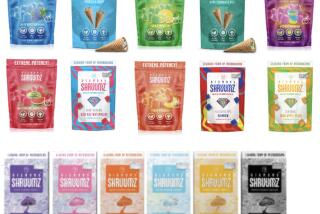Toy-Bashers Search for Bad Buys : Safety: Testers for the U.S. government conduct diabolical experiments to bring out dangers that may lurk in fun items.
GAITHERSBURG, Md. — Even Scrooge, on his worst bah-humbug days, might have shed a tear at the sight.
What appears at first glance to be a jolly Santa’s workshop in this Washington suburb is actually a torture chamber for Christmas toys that is worthy of the Spanish Inquisition.
Working behind closed doors in a small room stacked high with Yuletide goodies, Bob Hundemer, the Torquemada of the toy business, is gleefully wrenching the nose off a cuddly teddy bear.
Nearby, a bespectacled helper is calmly dismembering a stack of dolls with blonde tresses, yanking off their arms without a trace of emotion. At his elbow are the shattered remains of dump trucks, airplanes and baby rattles, and bits of stuffing from disemboweled toy animals.
They are working in the toy testing laboratory of the U.S. Consumer Product Safety Commission, and their tables are crowded with diabolical devices specifically designed to fold, spindle and mutilate--or worse.
Clamps and torque wrenches are applied to the eyes of lovable toy monkeys. Teething rings are dropped in pots of boiling water. Stuffed bears are battered with finger-like probes.
Is this guy the Grinch who stole Christmas, or what?
“No, I feel more like the good witch of the North,” says Hundemer, chief of the two-man laboratory housed in the drab former barracks of an abandoned Nike missile site about 15 miles northwest of Washington.
With extra help to cope with the Christmas rush, Hundemer and his assistant, Garfield Jenkins, work full time testing about 900 toys annually for potential safety hazards to children.
Hundemer estimates that more than two-thirds--many of them mass-produced imports from Mexico or the Far East--flunk the commission’s stringent standards. They are either recalled for redesigning or banned from the market as unfit for putting under the Christmas tree.
Last year, 245 toys were voluntarily recalled by manufacturers at the agency’s urging. Some of the worst offenders were displayed at a Dec. 1 news conference, when the commission gave its annual Christmas warning to toy-buying parents.
By far, the biggest threat posed by hazardous toys, which accounted for 142,000 injuries and a minimum of 22 deaths last year, are small parts that children can easily detach with their teeth or fingers and put in their mouths, causing choking or asphyxiation.
Most choking deaths involve balloons, marbles and other small balls, says John E. Preston, a mechanical engineer who designed many of the agency’s toy-testing procedures. But balloons and marbles are exempt from government safety regulations because of their universal popularity as children’s playthings.
“Can we tolerate the 10 deaths of children every year from choking on balloons?” Preston asked. “On the other hand, we don’t believe the world is ready to accept a ban on balloons and marbles. We’re perplexed about what we can do.”
Hundemer says he has “compelling reasons” for his personal interest in toy safety as the parent of two small children.
The government can’t begin to test all the 150,000 different toys on the market, he said, “so don’t depend on the government to provide you with complete safety.” Parents must play an active role in monitoring toy safety.
Look for durability and quality of construction, he says, and select toys suitable for a child’s age and skills. Avoid buying toys with small parts or long cords for infants or toddlers.
Be particularly cautious about small balls and toys that shoot projectiles or contain electrical heating elements. Consult label precautions and follow instructions. Supervise children at play, and repair or discard damaged toys immediately.
“Don’t be fooled when a clerk says, ‘We couldn’t sell it if it weren’t safe,’ ” Hundemer said. “That’s not true, and people who believe that are misguided.”
More to Read
Inside the business of entertainment
The Wide Shot brings you news, analysis and insights on everything from streaming wars to production — and what it all means for the future.
You may occasionally receive promotional content from the Los Angeles Times.










